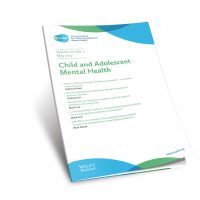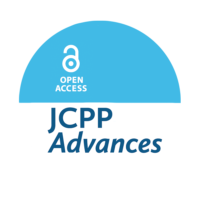Self-Harm
-

Schools engaged in doom-monitoring students’ online interactions and content creation: an analysis of dominant media discourses
Paper from the CAMH journal 2023 Special Issue – “Growing public concern about the safety and security of schools has led many schools and school districts within the United States to hire private companies to monitor students’ online interactions and the content they create, including on social media”. Kristjan Kikerpill and Andra Siibak
Read more -

Internet based intervention (Emotion Regulation Individual Therapy for Adolescents) as add-on to treatment as usual versus treatment as usual for non-suicidal self-injury in adolescent outpatients: The TEENS randomised feasibility trial
Open Access paper from JCPP Advances – “We assessed the feasibility of Internet based Emotion Regulation Individual Therapy for Adolescents (ERITA) in psychiatric outpatients aged 13–17 years who engaged in NSSI”. Britt Morthorst et al.
Read more -

Internet-delivered therapist-assisted cognitive therapy for adolescent social anxiety disorder (OSCA): a randomised controlled trial addressing preliminary efficacy and mechanisms of action
Open Access from the JCPP – “Forty-three youth (14–18 years) with SAD recruited through schools were randomly allocated to therapist-assisted Internet-delivered CT-SAD or waitlist for 14 week”. Eleanor Leigh (pic) and David M. Clark
Read more -

Adverse childhood experiences: what support do young people need?
Recent research funded by the National Institute for Health and Care Research (NIHR) identifies the types of support young people feel they need from services, and offers ways to support the mental health of children in care and those adopted from care.
Read more -

How isolation and secrecy fuel the self-harm flames
During Mental Health Awareness month in May 2022 – focused on the role of loneliness – Nip in the Bud listened to experts and those who have been through it to understand the vicious cycle of trying to cope alone. (TRIGGER WARNING: Please be aware that this blog discusses self-harm, including personal experiences of self-harm.) This blog was published by Nip in the Bud on 27 May 2022.
Read more -

NICE guidelines for self-harm: a new school of thought
New NICE guidelines for the management of self-harm in the UK emphasise the important role of non-specialists. In this article, Holly Crudgington and Dennis Ougrin discuss this guidance, focusing on the new advice for schools and its implications.
Read more -

CAMH Editorial: Volume 26, Issue 4, November 2021
Supporting children and young people (CYP) who self-harm (SH) is an important work of Child and Adolescent Mental Health Services (CAMHS). This theme is reflected throughout this issue.
Read more -

How effective are tools to help school staff better respond to young people who self-harm?
Aureliane Pierret and colleagues at the University of Cambridge carried out a systematic review into the effectiveness, feasibility and acceptability of interventions and tools to support school staff to better respond to young people who disclose self-harm.
Read more -

Conflating risk and mental illness
In this thoughtful article, a young person, Anna, reflects on her experience of risk being conflated with mental illness in child and adolescent mental health services (CAMHS), highlighting crucial lessons for clinicians, commissioners, and policy makers.
Read more -

Environmental factors linked with identifying as a sexual minority may increase suicidality risk
Adolescents who identify as a sexual minority (e.g., gay/lesbian, bisexual) are at an increased risk for suicidality compared to their heterosexual counterparts.1 Until now, inherent limitations in study design has meant that the extent of this association has been unclear.
Read more